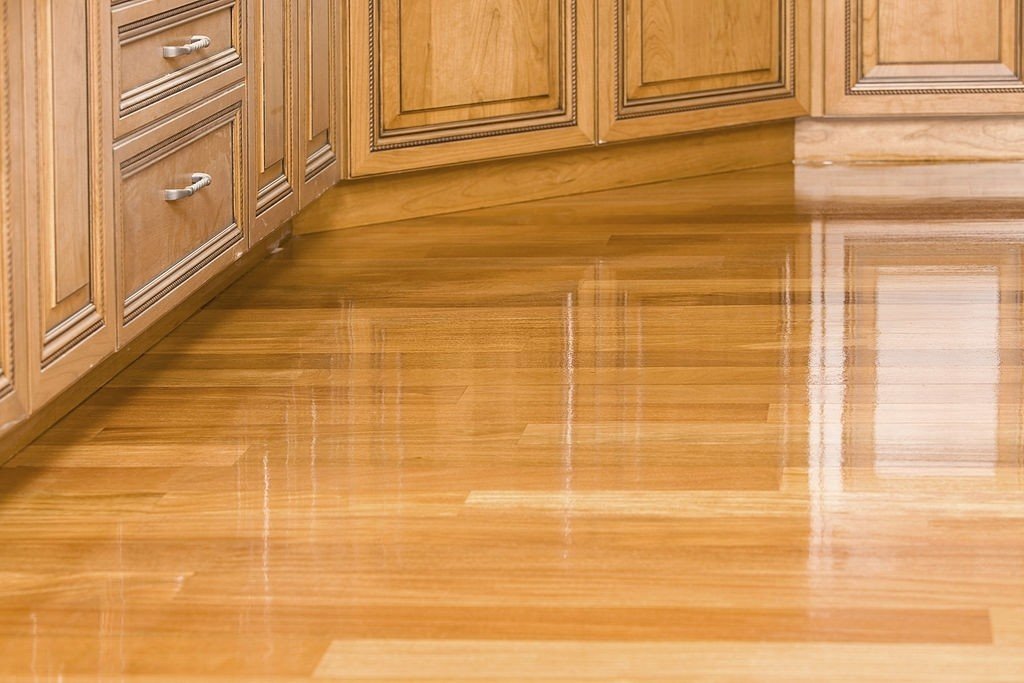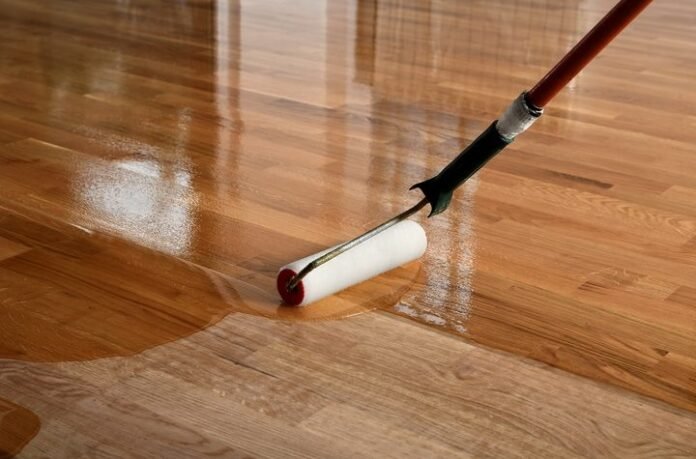Wood floor polish enhances the aesthetic appeal of the floor while providing protection against wear and tear. Wood floors add warmth, elegance, and natural beauty to any home or commercial space. However, maintaining the shine and longevity of wood floors requires proper care, including the regular use of wood floor polish. This article explores the different types of wood floor polishes, how to choose the right one, the benefits, and best practices for applying polish to wood floors.
Table of Contents
What is Wood Floor Polish?
Wood floor polish is a specialized liquid product designed to enhance the appearance and extend the life of wooden floors. It works by filling in minor scratches, adding a protective layer, and restoring shine. Available in various formulations, wood floor polish not only brings out the natural beauty of the wood but also acts as a barrier against damage from foot traffic, moisture, and everyday wear.
Types of Wood Floor Polish
There are several types of wood floor polishes on the market, each designed for different purposes and finishes. Understanding the types available can help you choose the right product for your floor.
Water-Based Polish
Water-based polishes are popular for their eco-friendliness and ease of use. They are low in VOCs (volatile organic compounds), making them safer for indoor air quality. These polishes dry quickly, offer a natural finish, and are easy to clean. Water-based polishes are often preferred for newer wood floors or floors with a polyurethane finish.
Oil-Based Polish
Oil-based polishes are more traditional and offer a deeper, richer shine. They penetrate the wood, nourishing and protecting it from within. These polishes are durable and offer longer-lasting results, but they typically take longer to dry and may emit stronger odors due to higher VOC content.
Wax-Based Polish
Wax-based polishes provide a soft, warm glow and are ideal for older, untreated wood floors. They form a protective coating on the surface, helping to prevent moisture and dirt from penetrating the wood. Wax-based polishes, however, require more maintenance as they can become dull over time and may need buffing to restore shine.
Silicone-Based Polish
Silicone-based polishes are long-lasting and offer a glossy, high-shine finish. These polishes are resistant to water and stains, making them a good choice for high-traffic areas. However, they can sometimes build up on the surface, requiring periodic stripping to avoid a slippery or cloudy appearance.
Natural DIY Solutions for Shiny, Healthy Hardwood Floors
- Beeswax and turpentine polish
Beeswax and turpentine can be mixed to make a powerful polish that cleans and nourishes the wood.
- Vinegar and vegetable oil polish
A simple yet incredibly efficient remedy consists of vinegar and vegetable oil. In a mixing dish, combine the vinegar and vegetable oil and blend well. The polish is ready.
- Solution for laminate and engineered wood floors
Mix white vinegar, plain water, lemon juice and unscented, undyed washing-up liquid. Avoid letting the solution drip or pool on the floor. This solution is great for cleaning laminate and engineered wood floors efficiently and without causing harm.
Benefits of Wood Floor Polish
Regular use of wood floor polish offers numerous benefits beyond just improving the appearance of the floor. These include:
Enhanced Aesthetic Appeal

Polishing wood floors brings out the natural grain and color of the wood, creating a glossy or satin finish that enhances the overall look of a room. It helps restore floors that have lost their shine over time due to foot traffic and exposure to the elements.
Protection Against Damage
Polish acts as a protective layer, shielding the wood from scratches, scuffs, and minor damage. It helps to prevent dirt, dust, and moisture from seeping into the wood, which can cause long-term damage such as warping or discoloration.
Improved Durability
Regular polishing can extend the life of your wood floors. The protective coating reduces wear and tear, especially in high-traffic areas, and can minimize the need for frequent refinishing or repairs.
Cost-Effective Maintenance
Polishing wood floors is a cost-effective way to maintain their beauty and durability. It’s a simple process that can be done without the need for professional help, reducing the long-term costs of floor maintenance.
How to Choose the Right Wood Floor Polish
Choosing the right wood floor polish is crucial to achieving the desired results and ensuring the longevity of your floors. Here are some factors to consider:
Wood Floor Finish
Different polishes work best with specific types of wood floor finishes. For example, water-based polishes are ideal for polyurethane-coated floors, while wax-based polishes are better suited for untreated or older wooden floors. Check the floor manufacturer’s recommendations to ensure compatibility.
Desired Shine Level
Some people prefer a high-gloss finish, while others prefer a more subtle, satin finish. The type of polish you choose will affect the final look of your floor. Silicone-based and oil-based polishes generally offer a glossy finish, while wax-based polishes create a softer sheen.
Durability and Traffic
Consider the level of foot traffic in the area where the floor is located. High-traffic areas like hallways, kitchens, or living rooms may require a more durable polish, such as an oil-based or silicone-based product, while low-traffic areas can benefit from water-based or wax-based polishes.
Environmental and Health Considerations
If indoor air quality or environmental impact is a concern, opt for a low-VOC, water-based polish. These products emit fewer chemicals into the air and are generally safer for use in homes with children or pets.
How to Apply Wood Floor Polish
Applying wood floor polish is a relatively simple task that can greatly improve the look and feel of your floor. Follow these steps for polishing your floor in the best way:
Prepare the Floor

Before applying any polish, ensure that the floor is clean. To eliminate dirt and dust, sweep or vacuum. For a deeper clean, use a wood floor cleaner that’s compatible with your floor’s finish. Allow the floor to thoroughly dry before proceeding to the next step.
Test the Polish
Before applying the polish to the entire floor, test it on a small, inconspicuous area to ensure it doesn’t damage the finish or change the color of the wood.
Apply the Polish
Using a clean microfiber cloth or mop, apply the polish evenly across the floor. Start in one corner of the room and work your way toward the exit to avoid stepping on the wet floor. Follow the manufacturer’s instructions regarding the amount of polish to use and drying times.
Allow the Polish to Dry
Before walking on the floor, let the polish dry. This can take anywhere from 30 minutes to a few hours, depending on the type of polish used. For oil-based and wax-based polishes, drying times may be longer.
Buff (If Necessary)
Some polishes, especially wax-based ones, may require buffing to bring out the shine. Use a clean, dry cloth or a floor buffer to gently polish the surface and achieve a smooth, glossy finish.
Common Mistakes to Avoid
When polishing wood floors, it’s easy to make mistakes that could lead to uneven results or damage to the floor. Some common mistakes are:
- Using the Wrong Polish: Ensure you’re using a polish that is compatible with your floor’s finish.
- Over-polishing: Applying too much polish can create a sticky or slippery surface. Use the recommended amount and avoid frequent reapplications.
- Skipping Cleaning: Always clean the floor before applying polish to prevent dirt from becoming trapped under the polish layer.
- Not Buffing Properly: If using wax-based polish, make sure to buff the floor thoroughly to prevent dull spots or buildup.
Conclusion
Wood floor polish is an essential tool in maintaining the beauty and longevity of wood floors. Whether you prefer a glossy, high-shine finish or a more natural look, there is a polish that suits your needs. By selecting the right type of polish, you can protect your floors from damage, enhance their appearance, and ensure they remain in excellent condition for years to come. Regular polishing is a simple and cost-effective way to keep your wood floors looking their best.
Apart from that if you want to know about “Choosing the Perfect Flooring for Your Stairs” then please visit our “Home Improvement” Category.
FAQs
To apply wood floor polish, first, clean the floor thoroughly. Then, apply the polish in a thin, even layer using a microfiber mop or cloth. Allow the polish to dry completely before walking on the floor, following the manufacturer’s drying time instructions.
Wood floor polish typically lasts several months, depending on foot traffic and the type of polish used. Some higher-quality polishes can protect the floor for up to 6 months in low-traffic areas.
Mix vinegar in water. Wash the floor with a soaked sponge. Rinse it with clean water.
To remove polish buildup, you may need a specific polish remover or a mild wood floor cleaner.



























